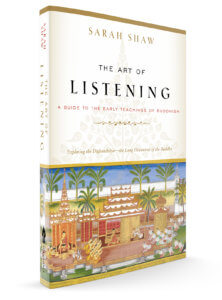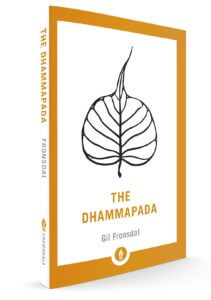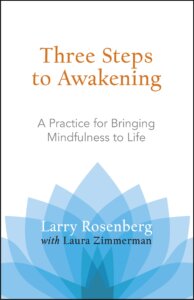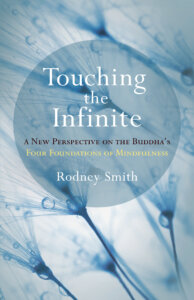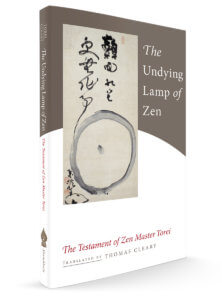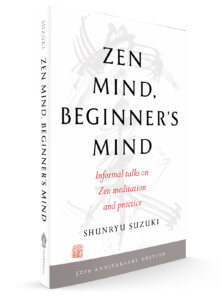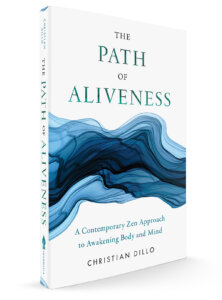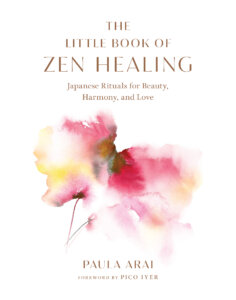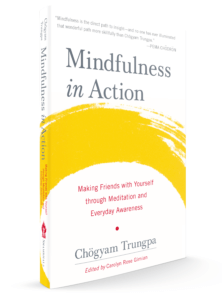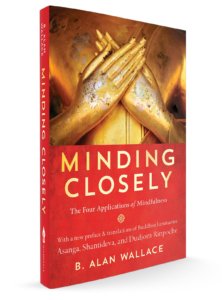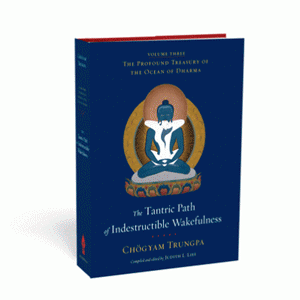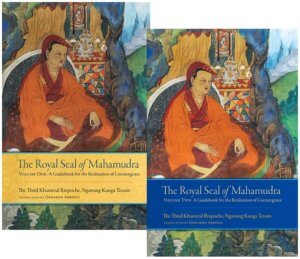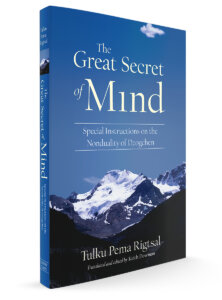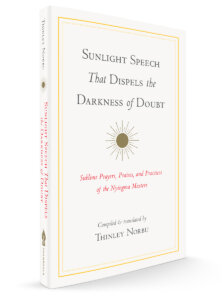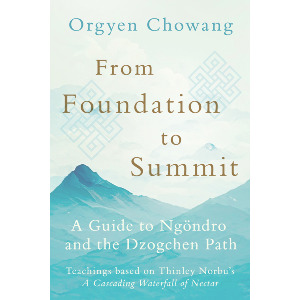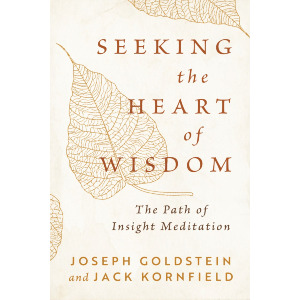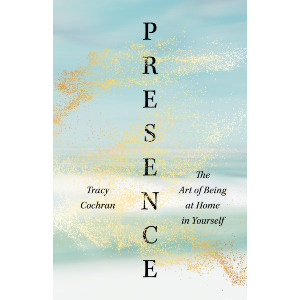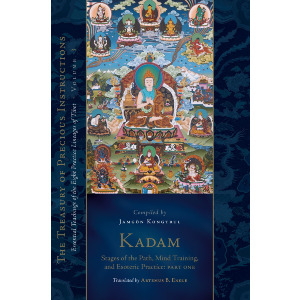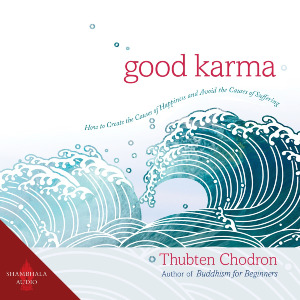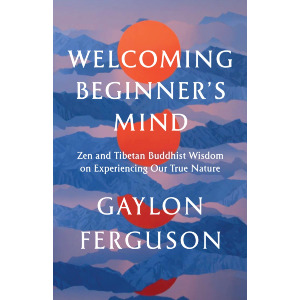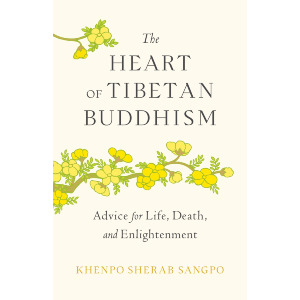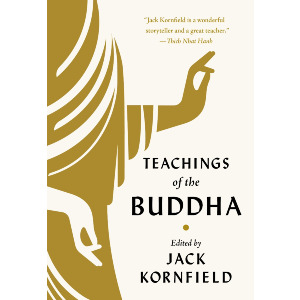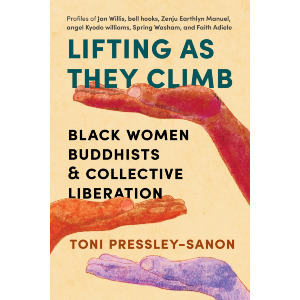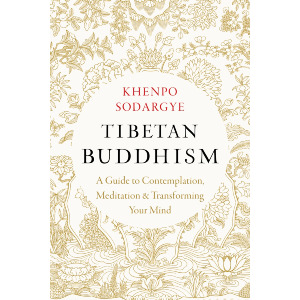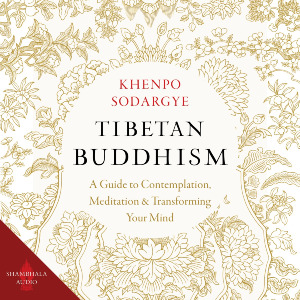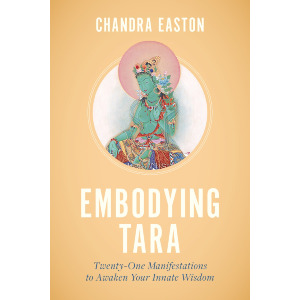
Today the term "mindfulness" has become a buzzword heard everywhere from elementary schools to corporate offices to the military. Generally speaking, when we use the term in secular life, we're referring to the ability to purposefully place our attention on our present experience whether it be walking step by step through a park, following our breath in and out or something more conventional like playing music or lifting weights. The purpose of mindfulness, in this regard, is about training one's attention.
However, while the practice of mindfulness has found its way into secular life, the roots of this Buddhist meditative practice stem far deeper, and the benefits of what we call "mindfulness" range beyond the common definition of "calming the mind" or "focusing on the present moment." In fact as Sarah Shaw points out in her book Mindfulness: Where It Comes From and What It Means, the Buddha used the Pali word sati rather than the Sanskrit term smṛti to describe mindfulness or satipaṭṭhāna. According to Shaw, the meaning of the term sati is significantly different from its Sanskrit correspondence which was more closely associated with the concept of memory rather than attention and awareness of the present moment. In this regard, Shaw notes that, the modern use of the term "mindfulness" is worthy of being understood as something far more complex and profound than simply "focused attention."
"...Buddhist understandings of psychology, of “living in the moment,” and of the benefits to be derived from this are more far-reaching than is suggested by many usages of the term mindfulness in the modern world."—Mindfulness, by Sarah Shaw
In this Guide for Readers, we'll showcase books such as Mindfulness, that delve into the historical texts, practices and applications of mindfulness from a Buddhist perspective in order to shed light on this extraordinary practice which has made headway in both religious and secular domains of modern life.
Mindfulness in the Pali Tradition
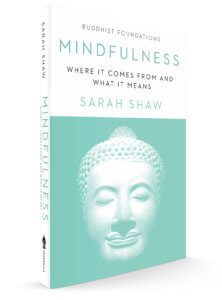
$17.95 - Paperback
Mindfulness: Where It Comes From and What It Means
By Sarah Shaw
As mentioned above, Mindfulness delves into the roots of the Buddhist practice of mindfulness from its origins in India to its spread across Asia and later into Europe and the United States. Shaw pays particular attention to the changing definition of "mindfulness," discussing both the origins of the Sanskrit term smṛti, and the Buddha's usage of the Pali term sati, as well as the etymology and biblical origins of the English term mindfulness. Her account is remarkably engaging and inspires readers to really consider the range of meaning behind this term which has become a part of everyday use.
In short, mindfulness incorporates both a sense of attentiveness and focus as well as a sense of memory and remembrance. However what is being remembered plays a large role in the context of each practice be it a Buddhist or secular activity. Through her research, Shaw takes her readers on an impressive journey through the history of mindfulness giving anyone interested in the practice a detailed map of "where it comes from," and perhaps even where it might go from here.
Crucially, she identifies how mindfulness cannot in fact be decoupled with an ethical dimension, a critique often levelled at mindfulness:
Mindfulness is one crucial part of a complete system of understanding the operation of the mind and the ways it can develop. So its nature is very different from its application in Western psychological models. Indeed, memory—the ancient Sanskrit meaning of the word—still plays an important part. Mindfulness is said always to work with other elements that support it and that it supports. Within the terms of Buddhist psychology, it simply cannot arise alone and likes company. When it arises, factors associated with it give it an ethical dimension, and other qualities arise too, such as loving kindness, compassion, sympathetic joy, and equanimity. It is found in daily life and is also essential for deep meditations known as jhānas. It is also, again with other factors, a faculty that is said to bring liberating insight and to free the mind completely.
"A brilliant and precise introduction to the deep roots of mindfulness."
—Joan Halifax, author of Being with Dying
The Art of Listening: A Guide to the Early Teachings of Buddhism
By Sarah Shaw
In a similar vein to Mindfulness discussed above, The Art of Listening takes a look at the early teachings of the Buddha—specifically the Dīghanikāya or Long Discourses of the Buddha, one of the four major collections of teachings. In her introduction Shaw explains that as people become interested in Buddhism or Buddhist practices they are interested in understanding more about the suttas (Sk. sūtras). The Art of Listening was written for the purpose of guiding people to better understand the historical texts behind Buddhist thought and practice—and of course mindfulness plays a central role.
At the same time, she encourages readers to consider the historical context of suttas—namely the tradition of reading texts out loud, memorizing larges sections and passages, and of course, listening—all of which require the practice of mindfulness. She writes:
I have found taking one at a time, letting it sink in without rushing it, is the best way to become familiar with them. If you can arrange to have them read aloud to you, you are lucky! Reading them out loud to yourself is also a helpful way of letting them have their effect. It is worth remembering that for centuries and indeed now—they have been recited, as group performances, to perhaps a large number of listeners.
In this regard, Sarah Shaw combines a literary approach and a personal one, based on her experiences carefully studying, hearing, and chanting the texts. At once sophisticated and companionable, The Art of Listening will introduce you to the diversity and beauty of the early Buddhist suttas.
Translated by Gil Fronsdal
The Dhammapada is the probably the most widely read Buddhist scripture we have. Presenting two distinct goals for leading a spiritual life—attaining happiness in this life (and in future lives) and the achievement of absolute peace—this classic text of teaching verses from the earliest period of Buddhism in India conveys the philosophical and practical foundations of the Buddhist tradition.
In terms of mindfulness, the Dhammapada represents the core teachings of the Buddha. For centuries the verses in the Dhammapada were memorized and chanted by devoted followers. Not only does the Dhammapada represent the long and rich monastic tradition of memorizing the teachings of the Buddha, but it also expresses the most fundamental teachings of the Buddha which, from a practitioners standpoint, should always remain at the forefront of one's mind.
Mindfulness of Breath: The Fundamental Key
Three Steps to Awakening: A Practice for Bringing Mindfulness to Life
By Larry Rosenberg
By Laura Zimmerman
In their introduction to Three Steps to Awakening, authors Larry Rosenberg and Laura Zimmerman ask the question:
"Is it possible for a natural, fundamental process, such as breathing in and out, to provide the foundation for a liberating meditation practice?"
They then state that "The Buddha would answer yes. He realized that the process of respiration, so often taken for granted, comprises the basis for a method of awakening available to all of you."
Drawing on the above statement, the Rosenberg and Zimmerman investigate the Buddha's method of breath awareness as an approach to liberation and well-being, presenting a threefold approach—hence, the Three Steps to Awakening. Their approach includes:
- breath awareness
- breath as anchor
- choiceless awareness (ie., awareness itself without effort or an object of focus such as the breath)
Having the three methods in one’s repertoire gives one meditation resources for any life situation. In a time of stress, for example, one might use breath awareness exclusively. Or on an extended retreat, one might find choiceless awareness more appropriate. The three-step method has been taught to Larry’s students at the Cambridge Meditation Center in Cambridge, Massachusetts, for many years.
Applying The Four Foundations of Mindfulness
Touching the Infinite: A New Perspective on the Buddha’s Four Foundations of Mindfulness
By Rodney Smith
Of the most well known teachings of the Buddha, the Four Foundations of Mindfulness described in the Satipatthana Sutta, or The Discourse on the Establishing of Mindfulness, illustrates a fundamental approach to Buddhist thought and practice. In his introduction to Touching the Infinite, Rodney Smith writes:
The practice of the Four Foundations of Mindfulness is a systematic confrontation with our belief systems that methodically removes the conditioned layers of our consensus reality, finally laying bare the ultimate reality that is the ground of being. In four integrated and interconnected practices, the Buddha lays out the entire spiritual landscape and skillfully guides us across the terrain toward the final unconditioned truth.
This particular practice of mindfulness, while contemplative in nature, involves a much more active style of mindfulness compared to focusing on the breath or movements of the body. Nonetheless, although active in nature, Smith argues that the purpose behind such contemplations is not to adhere to some superficial objectives of reality, rather, the point is to go beyond the conditioned truths such as impermanence and death.
Many interpretations of the Fourth Foundation have focused on the contemplative truths mentioned as the ground for our mindfulness, but such an interpretation does not move us toward greater depth, nor does it allow integration with the other foundations. I sense this foundation is pointing directly to the formless, which can only be characterized by what is seen within it since awareness has no formed qualities that can be described. He is encouraging us to move through the portal of emptiness back to the unconditioned ground of being (Nirvana).
Mindfulness in the Zen Tradition
Undying Lamp of Zen: The Testament of Zen Master Torei
By Zen Master Torei Enji
Edited and Translated by Thomas Cleary
This is a complete explanation of Zen practice written by one of the most eminent masters of pre-modern Japan. The author, Torei Enji (1721–1792), was best known as one of two “genius assistants” to Hakuin Ekaku, who was himself a towering figure in Zen Buddhism who revitalized the Rinzai school.
The concept 'right mindfulness' forms an important touchpoint throughout the book and comes under close examination in the appendix 'On Practice.'
The work of right mindfulness is the unsurpassed practice. If you have the work of right mindfulness, you don’t get stuck on formal practices and are not concerned with dignified manners. In principle and in fact, sitting and walking, right and wrong, action and repose, truth and untruth, in the world and beyond the world, all that’s necessary is not losing right mindfulness.
Zen Mind, Beginner’s Mind has become one of the great modern spiritual classics, much beloved, much reread, and much recommended as the best first book to read on Zen.
Similar to Sarah Shaw's definition of mindfulness as a universal, Shunryu Suzuki Roshi explains that mindfulness is a kind of wisdom beyond a particular form of philosophy. From the Zen Buddhist perspective, this wisdom is coupled with the philosophy behind emptiness and the teachings of the Prajñāpāramita—an essential Mahāyāna sūtra. In Zen Mind, Beginner's Mind Suzuki Roshi writes:
Mindfulness is, at the same time, wisdom. By wisdom we do not mean some particular faculty or philosophy. It is the readiness of the mind that is wisdom. So wisdom could be various philosophies and teachings, and various kinds of research and studies. But we should not become attached to some particular wisdom, such as that which was taught by Buddha. Wisdom is not something to learn. Wisdom is something which will come out of your mindfulness. So the point is to be ready for observing things, and to be ready for thinking. This is called emptiness of your mind. Emptiness is nothing but the practice of zazen.
The Path of Aliveness: A Contemporary Zen Approach to Awakening Body and Mind
In The Path of Aliveness, Zen and Taoist Qigong teacher Christian Dillo offers a path of meaningful transformation tailored to our times.
In terms of Zen mindfulness, Dillo gives a detailed and lucid account in chapter 4, "Mindfulness and Bodyfulness" and chapter 5, "The Four Gates of Mindfulness." He writes:
Mindfulness can be defined as the intention to bring attention to sensation without cognitive overlay. For example, mindfulness of breathing—the widely recommended starting point for mindfulness meditation—is usually instructed as bringing attention to one’s inhale and exhale, and when attention gets caught up in thinking, to gently bring it back to breathing. This “bringing of attention” doesn’t happen on its own; it requires intention.
Moreover, in discussing mindfulness from a philosophical point of view in line with Suzuki Roshi's point on mindfulness and wisdom above, Dillo explains that focusing on the breath reveals the dual structure of the mind in that a thought coproduces the sense of a thinking self. According to Dillo:
Since mindfulness practice frees attention from cognition—whether I fully understand that or not—it challenges this continuity of self and begins to engender something new. Buddhism traditionally refers to this transformed sense of self as “no self” or “nonself,” terms that tend to create quite a bit of confusion in Western culture.
The Little Book of Healing Zen: Japanese Rituals for Beauty, Harmony, and Love
By Paula Arai
Like Marie Kondo's Shinto principles for decluttering, Paula Arai uses rituals influenced by Japanese Zen for personal and relation nourishment and spiritual healing.
As mentioned in the examples above, the concept of mindfulness, through broad in definition, entails more than just focusing on the breath, and while the practice of engaging in one's activity with intention is an important aspect of mindfulness, the implications run deep. In fact, healing may very well be the real aim of Buddhist practice as indicated in Pico Iyer's introduction to The Little Book of Healing Zen.
It’s often been noted that the Buddha was at heart a doctor of the mind, neither perfect nor immortal but committed at every moment to trying to heal our unease...
In that regard, author Paula Arai exemplifies this point.
Healing rituals are concrete acts of compassion that can guide us through our lives, helping to decrease our fear and anxiety and to increase our awareness and connectedness. Such rituals flourish in the messiness of life conditions. They are not about right or wrong, nor are they exclusive to any particular tradition. Rather, healing rituals are driven by thoughtful intent and engage our deepest love. When attuned to this love, you can create rituals that are healing. And in turn, when you do a healing ritual, you are in harmony with your highest self.
Mindfulness in the Tibetan Tradition
Mindfulness in Mahāyāna (The Great Vehicle)
Mindfulness in Action: Making Friends with Yourself through Meditation and Everyday Awareness
By Chogyam Trungpa
Edited by Carolyn Rose Gimian
As Carolyn Rose Gimian writes in the preface to Mindfulness in Action,
Mindfulness in Action: Making Friends with Yourself through Meditation and Everyday Awareness is, as the title suggests, a book about mindfulness and its application in the context of our whole life. The book focuses on the practice of meditation as a tool for developing mindfulness and explores how mindfulness and awareness influence our everyday life. It is a book for people who want to explore mindfulness through the practice of meditation and also apply meditative insight in their lives. It includes instructions for the practice of meditation, as well as an in-depth look into the principles of mindfulness.
This book is great for anyone interested in learning the basics of sitting meditation and, as Trungpa Rinpoche puts it, "making friends with ourselves."
We also have an online course, Mindfulness in Action, taught be Carolyn Rose Giman!
Mindfulness in Action:
Making Friends with Yourself through Meditation and Everyday Awareness
Taught by Carolyn Rose Gimian
Minding Closely: The Four Applications of Mindfulness
Minding Closely presents key methods to working with the mind from a traditional approach taught by the Buddha. The Four Applications of Mindfulness include mindfulness of the body, feelings, the mind, and phenomena. Wallace goes into great detail while remaining easy and accessible for all readers. Likewise, he grounds the more esoteric philosophical points into practical application through guided meditation practices.
Illustrating the aim of his book, Wallace writes:
The ability to sustain close mindfulness is a learned skill that offers profound benefits in all situations. This book explains the theory and applications of the practice the Buddha called the direct path to enlightenment. These simple but powerful techniques for cultivating mindfulness will allow anyone, regardless of tradition, beliefs, or lack thereof, to achieve genuine happiness and freedom from suffering. By closely minding the body and breath, we relax, grounding ourselves in physical presence. Coming face to face with our feelings, we stabilize our awareness against habitual reactions. Examining mental phenomena nakedly, we sharpen our perceptions without becoming attached. Ultimately, we see all phenomena just as they are, and we approach the ground of enlightenment.
Mindfulness in Vajrayāna (The Diamond Vehicle)
By Chogyam Trungpa
Edited by Judith L. Lief
The Tantric Path of Indestructible Wakefulness, the third volume of the Profound Treasury of the Ocean of Dharma, is a compilation of the view and practices of Vajrayāna.
Just as mindfulness and concentrated awareness is emphasized in the Theravada and Mahāyāna tradition, it's also emphasized in Varjayāna. In her Editor's Introduction Judith Lief explains that Trungpa Rinpoche stressed the "importance of ongoing cultivation of mindfulness and awareness as the essential underpinning of vajrayana practice and understanding."
Recounting her experience in seminary, Lief writes:
Throughout his teachings, he kept coming back to the need for grounding in shamatha (mindfulness) and vipashyana (awareness). By alternating weeks of intensive shamatha-vipashyana with weeks of study, Trungpa Rinpoche’s seminary training gave his students a feel for the dynamic way in which meditation could inform study, as well as how study could enrich meditation. The practice atmosphere created by the days of group meditation created the kind of container that made it possible for students to hear the dharma in a deeper, more personal and heartfelt way. The power of such an atmosphere made it possible for a meeting of minds to occur between the teacher and his students.
Mindfulness in Mahamudra and Dzogchen
As mentioned above, the practice of mindfulness is incorporated into all traditions of Buddhism. In the Vajrayāna tradition, the practice of calming the mind and listening closely to teachings as a means of receiving transmission is largely an expression of mindfulness application. In this regard mindfulness in both the Dzogchen and Mahamudra tradition is emphasized as a means to connect deeply and fully with the teacher and the teachings through the practice of devotion and receiving insight into the nature of mind whether through direct teachings as described in The Royal Seal of Mahamudra or The Great Secret of Mind, or reading the words of inspired masters in books such as Sunlight Speech That Dispels the Darkness of Doubt.
The Royal Seal of Mahamudra
By The Third Khamtrul Rinpoche, Ngawang Kunga Tenzin
Translated by Gerardo Abboud
Mahamudra, or The Great Seal, is a body of teachings from the Kagyu tradition of Tibetan Buddhism that emphasizes Sahajayoga or "coemergence."
Beginning with the close relationship between phenomena and mind and the immense benefits of meditating on the nature of mind, the Third Khamtrul Rinpoche offers careful instructions on the four yogas of mahamudra together with advice on how to recognize genuine progress and how to remove obstacles that arise during meditation.
Specifically regarding mindfulness, readers of secular or Pali-canon based presentations of mindfulness will find a very unique approach, e.g.,
What is meant by saying that the heart of all teachings and the root of all paths is encompassed by the undistracted mindfulness of one’s mind? As explained before, since one’s mind is the very thing that creates samsara, nirvana, good, bad, positive, negative, happiness, sorrow, and all the rest, everything converges in this mind. Therefore, the ground doer of samsara and nirvana being one’s mind, the ground root of samsara and nirvana is this very mind. So we should know that the path of undistracted mindfulness of the mind is the root of all meditations and indeed the unavoidable way to reach the essential truth.
The Great Secret of Mind: Special Instructions on the Nonduality of Dzogchen
By Tulku Pema Rigtsal
Translated by Keith Dowman
Dzogchen (Great Perfection) goes to the heart of our experience by investigating the relationship between mind and world and uncovering the great secret of mind's luminous nature. Weaving in personal stories and everyday examples, Pema Rigtsal leads the reader to see that all phenomena are the spontaneous display of mind, a magical illusion, and yet there is something shining in the midst of experience that is naturally pure and spacious. Not recognizing this natural great perfection is the root cause of suffering and self-centered clinging. After introducing us to this liberating view, Pema Rigtsal explains how it is stabilized and sustained in effortless meditation: without modifying anything, whatever thoughts of happiness or sorrow arise simply dissolve by themselves into the spaciousness of pure presence.
Regarding mindfulness in the context of Dzogchen, Tulku Rinpoche presents it in a manner unique to this tradition, e.g.,
For Dzogchen meditation, we need constant mindfulness, and there are two kinds. The first is conditioned mindfulness, the second ultimate mindfulness. For beginners, conditioned mindfulness is remembering what the lama taught and then applying it; that is meditation with a cause, which entails effort. Once that outer or preliminary meditation has been accomplished, the main practice is to abide in pure presence, where effort is unnecessary and meditation is natural and automatic. This is called “mindfulness of reality” and since it is effortless, we do not need to strive in any way to arrive there.
Translated by Thinley Norbu
With the wish to inspire and motivate practitioners, Kyabje Thinley Norbu Rinpoche has translated a selection of wisdom teachings into direct and simple English that retains the power of the original writings and their emphasis on practice. The authors are five of the most sublime scholar-saints of the Nyingma lineage of Tibetan Buddhism: Kunkhyen Longchenpa, Kunkhyen Jigme Lingpa, Patrul Rinpoche, Mipham Rinpoche, and Kyabje Dudjom Rinpoche.
Mindfulness, generally in the context of Dzogchen, appears throughout, in particular the translation of Jigme Lingpa's "Mindfulness, an Ocean of Qualities" which includes a variety of facets of mindfulness, e.g.,
Because I kept mindfulness too tightly, obstacles of vital air energy also occurred. In order to develop my practice, I communicated with and sought the advice of many noble Lamas, meditators, and fellow Dharma friends, yet no one except you has shown me the natural understanding of instantaneous mindfulness, which is the essence of meditation.


